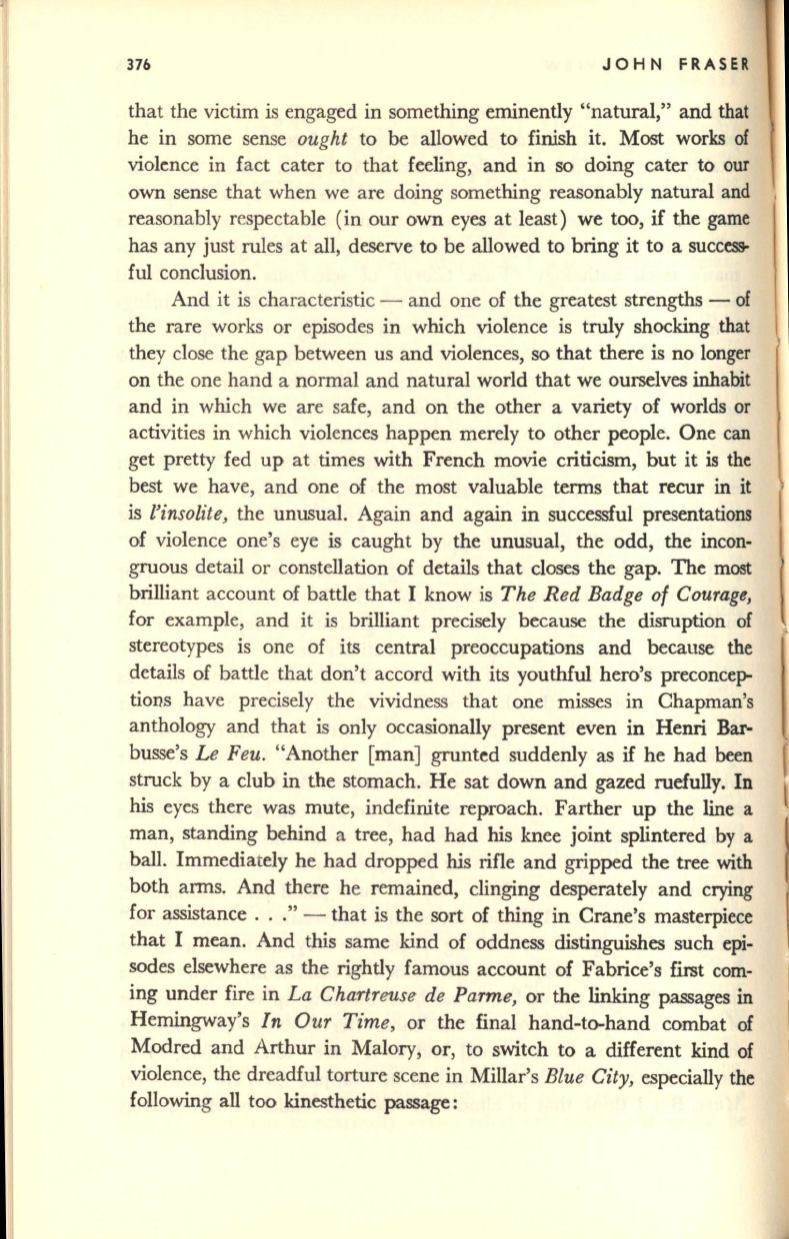
376
JOHN FRASER
that the victim is engaged in something eminently "natural," and that
he in some sense
ought
to be allowed to finish it. Most works of
violence in fact cater to that feeling, and in so doing cater to our
own sense that when we are doing something reasonably natural and
reasonably respectable (in our own eyes at least) we too, if the game
has any just rules at all, deserve to be allowed to bring it to a
succ~
ful conclusion.
And it is characteristic - and one of the greatest strengths - of
the rare works or episodes in which violence is truly shocking that
they close the gap between us and violences, so that there is no longer
on the one hand a normal and natural world that we ourselves inhabit
and in which we are safe, and on the other a variety of worlds or
activities in which violences happen merely to other people. One can
get pretty fed up at times with French movie criticism, but it
is
the
best we have, and one of the most valuable terms that recur in it
is
l'insolite,
the unusual. Again and again in successful presentations
of violence one's eye is caught by the unusual, the odd, the incon–
gruous detail or constellation of details that closes the gap. The most
brilliant account of battle that I know is
The Red Badge of Courage,
for example, and it is brilliant precisely because the disruption of
stereotypes is one of its central preoccupations and because the
details of battle that don't accord with its youthful hero's preconcep–
tions have precisely the vividness that one misses in Chapman's
anthology and that is only occasionally present even in Henri Bar–
busse's
Le Feu.
"Another [man] grunted suddenly as
if
he had been
struck by a club in the stomach. He sat down and gazed ruefully. In
his eyes there was mute, indefinite reproach. Farther up the line a
man, standing behind a tree, had had his knee joint splintered by a
ball. Immediately he had dropped his rifle and gripped the tree with
both arms. And there he remained, clinging desperately and crying
for assistance ..." - that is the sort of thing in Crane's masterpiece
that I mean. And this same kind of oddness distinguishes such epi–
sodes elsewhere as the rightly famous account of Fabrice's first com–
ing under fire in
La Chartreuse de Parme,
or the linking passages
in
Hemingway's
In Our Time,
or the final hand-to-hand combat of
Modred and Arthur in Malory, or, to switch to a different kind of
violence, the dreadful torture scene in Millar's
Blue City,
especially the
following all too kinesthetic passage:


